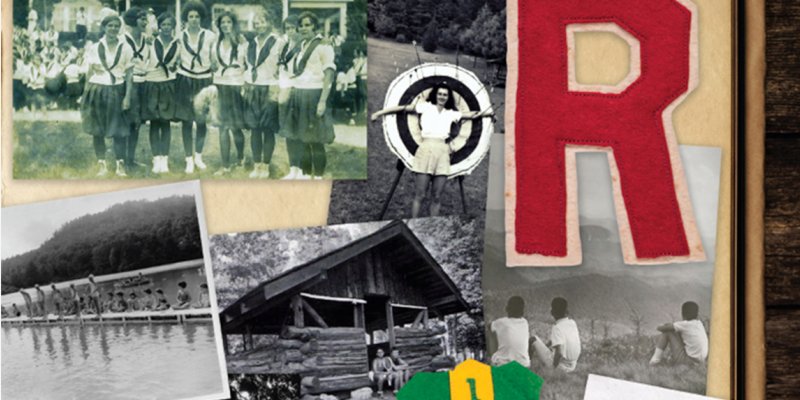Camp Greystone hosted its first crop of campers in 1920, with 84 girls in attendance. Almost every following summer brought greater numbers and new offerings, from team sports and individual athletic challenges to banquets, balls, and good-natured contests of every stripe. The camp developed a national reputation, and in August 1941, Life magazine published a glowing feature on Greystone, finding the campers “fizzing with the health and self-assurance that camp life invariably imparts.”
“Camp Greystone has a purpose,” announced an early brochure. “It is to give the girl who has spent the winter in study or work an ideal outing under the most inspiring surroundings, so as to send her back strong in Body and in Mind and in Spirit.”
No summer at Greystone is complete without songs, lots of camp songs. One old chestnut began this way: “Greystone is the very place for sweet young girls to go, It brings them up and tones them down, sophisticated so— I used to be a scatterbrain, a blot on the family tree, But since I’ve been to Camp Greystone, the family’s proud of me.”
Precious memories of life at Chunns Cove Camp included quality time with friends in the “kiosks” used for lodging, tranquil floats on spring-fed Lake Little, dramatic performances, and overnight camping jaunts in the nearby mountains.
Chunn’s Cove’s 1938 brochure, shown below, announced one of the camp’s final operating seasons. For eight weeks of room, board, and activities, the camp charged $300. The brochure noted that, “a 10% discount in tuition is given to sisters” who attended camp together.
In addition to their steady regimen of orchestral, choral, and dramatic training, campers plunged into all the traditional summer activities, from hikes and trail rides to watersports and plenty of plain old horsing around.
With the arrival of the camp in 1944, Brevard suddenly echoed with the sounds of classical music, and locals began a decades-long love affair with TMC’s summer recitals.
One camper shared his notes on Sequoyah in the 1940s: “The memories of those three summers are wonderful. They still stand out clear as a bell. Hikes to Lovelace Gap and Bald Knob, to Hawk’s Bill and Craggy Gardens, and the one long hike to Mt. Mitchell. … Cabin suppers, watermelons in the middle of the night, cleaning kerosene lanterns, catching snakes, slipping off to the store at Beech … [and] nighttime Indian dancing in full regalia.”
Over the decades, Camp Sequoyah became a multifaceted institution, branching out from the boys camp’s regular program to also offer a girls camp, a canoe camp, a “coastal camp” in South Carolina, a training institute for camp counselors, and Camp Tsali—a session for boys age 14-17 that taught hardcore wilderness survival skills. All of the initiatives stressed C. Walton Johnson’s prescription for cultivating self-reliance and personal growth.
Horses were, of course, a big part of Rockbrook summers, and the camp hosted an annual riding competition.
Other historic Camp Rockbrook touchstones have included structures like Lakeview Lodge, constructed from local rock
Rockbrook water wheel, generated all the camp’s electricity in its early years.
Art classes by the lake given by renowned artists.
Reflecting a practice common at the time, Frank Bell Sr. named his camp in tribute to Native American lore: Mondamin was a native deity said to have given humans corn. Camp Tawasentha, a camp for younger boys that the Bells also ran, was named using a similar convention.
Like many of its counterparts in WNC, Camp Mondamin has taken full advantage of its natural surroundings through the years, with nearby mountains, rivers, and national parks providing a wealth of opportunities for the outdoor adventure-geared camp.
And from time to time, a famous neighbor like the late Carl Sandburg stopped by to serenade campers.
Camp Carolina has existed at two locations. After its initial run from 1924 to ’82, the camp moved two miles to its present home, relocating more than 50 original buildings along the way.
“Outdoor sport is the major interest of the Carolina campers,” a newspaper noted in 1928, and the same could be said today.
Camp Blue Star operates six individual “Blue Star Camps”—separate summer camp sessions geared to age and gender groupings. In almost eight decades of operation, Blue Star has hosted close to 100,000 campers, staff members, and other visitors.
